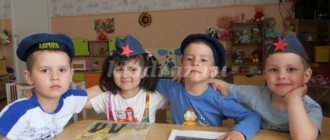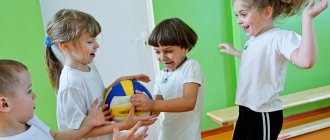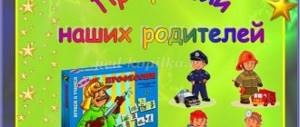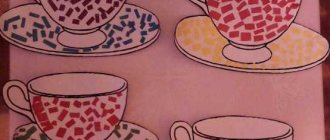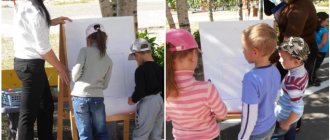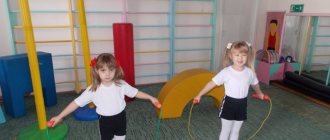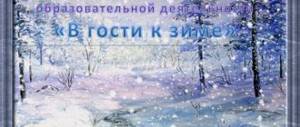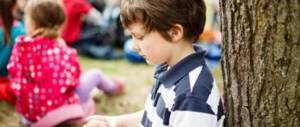Ecological trail in kindergarten. Preparatory group
Features of organizing an ecological trail in the preparatory group of a kindergarten.
Author Natalya Sergeevna Rostova, category I teacher, MBDOU “Kindergarten No. 155”, Nizhny Novgorod. The material is intended for educators and teachers. Goal: to reveal the features of organizing an ecological trail in a group. Objectives: to expand teachers’ ideas about the possibility of creating an eco-trail in a group; Organizing an ecological trail in a group is one of the forms for the formation and development of children’s environmental ideas. The ecological trail acts as a means of environmental education for children. In a general understanding, an eco-trail is a specially equipped route passing through certain objects, on which those walking receive oral or written information about these objects. In our group, we equipped an eco-trail and identified all the points along its route. Its name was determined by the plot character - the Wise Owl, who invites you to look into her flock - Parliament.
I have developed a route that will not allow you to go astray. The route sheet contains the names of all points. Arrows indicate the path from one point to another. Each point corresponds to an image of an Owl, conveying its specificity. I used owls by artist Inga Paltser. Each owl with its own character suited my idea perfectly.
1. Parliamentary readings. This is selected natural history literature. The child can independently choose a book according to his taste and calmly look at it. Get to know the natural world and its secrets better.
With the help of models and encyclopedias, we develop interest in wildlife, cultivate a kind attitude towards animals, birds and fish. Our children were most interested in the animal world. In our group there is a layout “Desert”, “Arctic”, “Tropics”, “Insect World”, dry aquarium, “Homestead”, “Spring Forest”.
Want to know everything! 3. Sovushkin's vegetable garden A vegetable garden on the windowsill promotes the development of curiosity and observation in children, this helps to better understand plant life. Children are especially interested if they become direct participants: they plant plants themselves, sow seeds, water them and, of course, observe.
4. Secret knowledge Games with water and sand open the door to the world of secret knowledge. It is here that they become acquainted with the properties of water and sand, discover the unknown and apply the acquired knowledge. Additional materials such as pebbles, sticks, molds, etc. promote the development of constructive skills, curiosity and creativity.
5. Green house A green house means indoor plants and equipment for caring for them. Children are on duty at the nature center every day. Together with the teachers, they learn how to care for plants and water them. Watering flowers is one of the difficult techniques. The child must learn that not all plants are watered the same way. Each flower has a kind of “tag” with symbols, after “reading” which the child will know how to properly care for a specific flower.
6. Pantry of wisdom The pantry includes all educational games aimed at developing children's environmental knowledge. Games will teach children kindness, expand their knowledge about nature, methods of protecting it from negative human actions. At the same point on the route, nature history lapbooks are available for children. This form of presenting the material will undoubtedly attract the child and contribute to a deeper assimilation of knowledge.
7. All year round Working with the natural calendar plays a huge role in the environmental education of children and the formation of ideas about the seasons and seasonal phenomena in nature. It develops visual, figurative and schematic thinking in preschool children.
8. Through the attic window Observations of wildlife are carried out daily. Every day, children note the weather in individual observation diaries. We also have a general observation diary, which children also fill out on their own. Weather features are marked using symbols.
9. Mini-museum “Feathered Neighbors” A mini-museum is a thematic exhibition dedicated to a specific topic. A huge plus is that the exhibits can and should be touched with your hands. You can try yourself as a tour guide by inviting students from other groups or parents on a tour.
10. Collection of Ideas The creative workshop “Collection of Ideas” is actively working and surprising. Everything you need to develop children's creative abilities is here. All kinds of beads, threads, natural materials - everything provides the most comfortable conditions for the creative potential of the child’s personality.
11.WHAT? WHERE? HOW? Experimenting - what could be more interesting for a child? Research and search activity is the natural state of a child. Experimental activities develop observation, the desire to understand the world, the ability to invent, use non-standard solutions in difficult situations, and create a creative personality.
12. Third Eye “An educated person is one who knows where to find what he doesn’t know.” Georg Simmel The use of multimedia technologies in the teaching and educational process in a preschool educational institution is one of the newest and most relevant forms of work. It is the “Third Eye” that allows us to visit different parts of our planet, space, and see what is impossible to see with our own eyes in a given period of time.
13. Young Artists Club Do you like to draw? Then this is the place for you. Here are all kinds of tools and materials for developing drawing skills, imagination and the ability to express your inner world.
14. Lessons from the Wise Owl. Every day the Wise Owl brings mysterious tasks, tells new and interesting things about the natural world and its laws. She not only tells, but also makes you think and come up with a way out of different situations.
We believe that an eco-trail in a group is new and modern. New knowledge and discoveries of an environmental nature presented to children with the help of a story character are much more interesting than the usual story of a teacher. And the opportunity to become “ecotourists” without leaving the group is also quite an exciting way of presenting material. Thank you.
We recommend watching:
Formation of a caring attitude towards the native land in children of senior preschool age Scenario of an environmental holiday in a kindergarten dedicated to World Water Day Formation of an ecological culture in the personality of a preschool child Environmental education of younger preschool children
Similar articles:
Games and exercises on ecology in the senior preparatory group
Story-based and didactic games about the world around us in kindergarten. Average group
